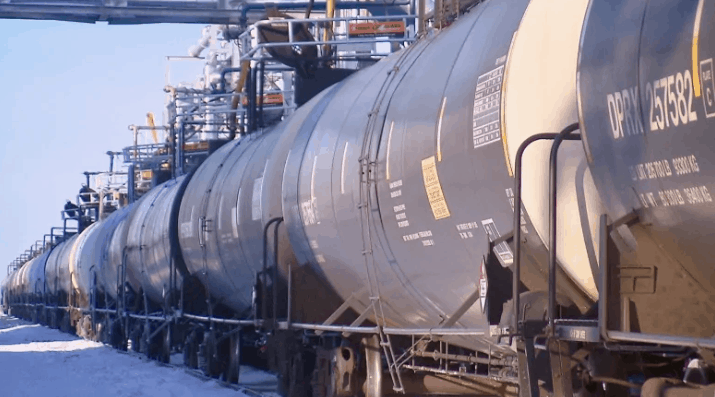Oilpatch CEOs want to put idle rail cars to use, but face mandated production limit
The chief executives of major oil companies are questioning why so many oil rail cars are sitting idle in Alberta, while the provincial government is still limiting oil production.
The provincial government introduced the oil curtailment problem seven months ago to boost prices and clear the backlog of oil in the province.
Prices did increase, so that Western Canada Select prices traded close to the value of oil south of the border. That unusually narrow price discount has had some unintended consequences. Transporting Canadian oil to the U.S. Gulf Coast by rail became uneconomic, shippers argued. That’s why the oil backlog has failed to clear and oil shipments by rail have fallen.
Mark Little, the chief executive of Suncor shook his head several times on stage while discussing the issue at an energy conference in Calgary hosted by TD Securities on Tuesday.
“What happened under curtailment [was] literally shutting in market access and idling rail, while the industry is struggling because we don’t have market access,” he said to the crowd of investors. “It’s not working too good.”
Roughly, he said there is about 250,000 barrels per day of unused crude by rail capacity in Alberta, so the government should be able to lift the curtailment policy and be able to export all of the extra oil out of the province.
“We’re within rounding distance of literally getting all of the production to market with the excess rail that is available and get a fair price for it,” Little said.
In an interview with journalists, Little said the demand for crude by rail would increase dramatically if the government would scrap its curtailment policy.
“If they allowed people to increase their production, everybody that’s curtailed would be chasing after incremental rail,” he said.
Increasing oil production to put idling rail cars to use seems straightforward, but there are levels of complexity.
The provincial government is currently trying to rid itself of a crude-by-rail contract signed by the former NDP government. Many industry players are interested in taking over the contract, but negotiations are underway.
“There are confidential conversations going on between our government and private sector actors. Our strong preference is that the private sector take over those contracts,” Premier Jason Kenney told reporters last month.
The last thing oilpatch executives want is for the contracts to be cancelled.
“It may not be the best thing in the world for the government to be owning that 120,000 barrels per day of rail capacity, but make no mistake, it really is important that rail capacity gets moving,” said Alex Pourbaix, chief executive of Cenovus.
One of the companies interested in investing more in crude by rail is Canadian Natural Resources. The company had to cut its production by 80,000 barrels under the curtailment policy.
“We are very interested in taking rail capacity,” said Steve Laut, executive vice-chairman of the company. “It’s a very good approach to get off curtailment and increase market access for the whole industry.”
The provincial government likely doesn’t want to wind down the curtailment policy too quickly to avoid possible consequences such as a sharp drop in oil prices, which originally led to the creation of the policy.
Curtailment limits have eased gradually since it was first enacted.
Laut said one solution would be to reward oil producers who commit to adding crude by rail capacity by giving a larger allotment of production under the curtailment policy.
Alberta’s energy minister said she would be open to such a proposal.
“We would take a look at that,” said Sonya Savage to reporters. “It’s a possibility, but we would need to see what it all looks like.”

